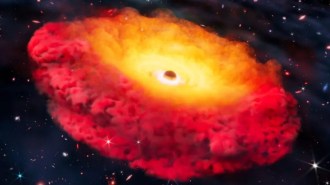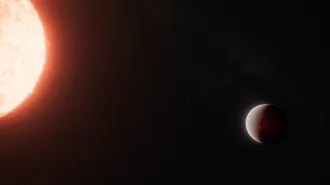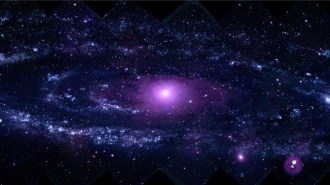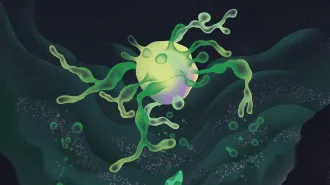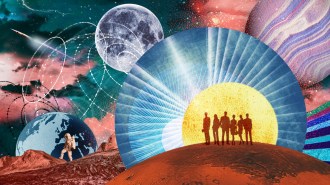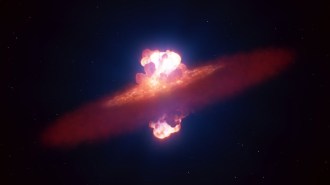To protect itself from debris, the Hubble Space Telescope literally had to turn its back on last November’s Leonid meteor storm. As luck would have it, that put the luminous Helix nebula directly in the telescope’s line of sight. On May 9, NASA and the European Space Agency released the portrait that Hubble took of the nebula.

At a distance of 650 light-years, Helix is one of the closest known planetary nebulae. These glowing bodies got their moniker a century ago when astronomers, using the smaller telescopes of the time, described their appearance as planetary disks. In reality, the objects are sculpted by a rush of gases expelled by dying, sunlike stars.
Because the Helix nebula looms large, it took several exposures for the Hubble’s recently installed Advanced Camera for Surveys to record most of it. The resulting mosaic highlights in unprecedented detail thousands of spokes along the nebula’s inner rim. The spokes emanate from the nebula’s central, dying star and formed when a hot wind from the star crashed into colder shells of dust and gas that the star had expelled earlier.
Astronomers have concluded that the Helix nebula resembles a bubble only because of the viewing angle from Earth. Earth-orbiting and ground-based telescopes happen to be looking directly down on a trillion-kilometer-long cylinder.
****************
If you have a comment on this article that you would like considered for publication in Science News, send it to editors@sciencenews.org. Please include your name and location.
